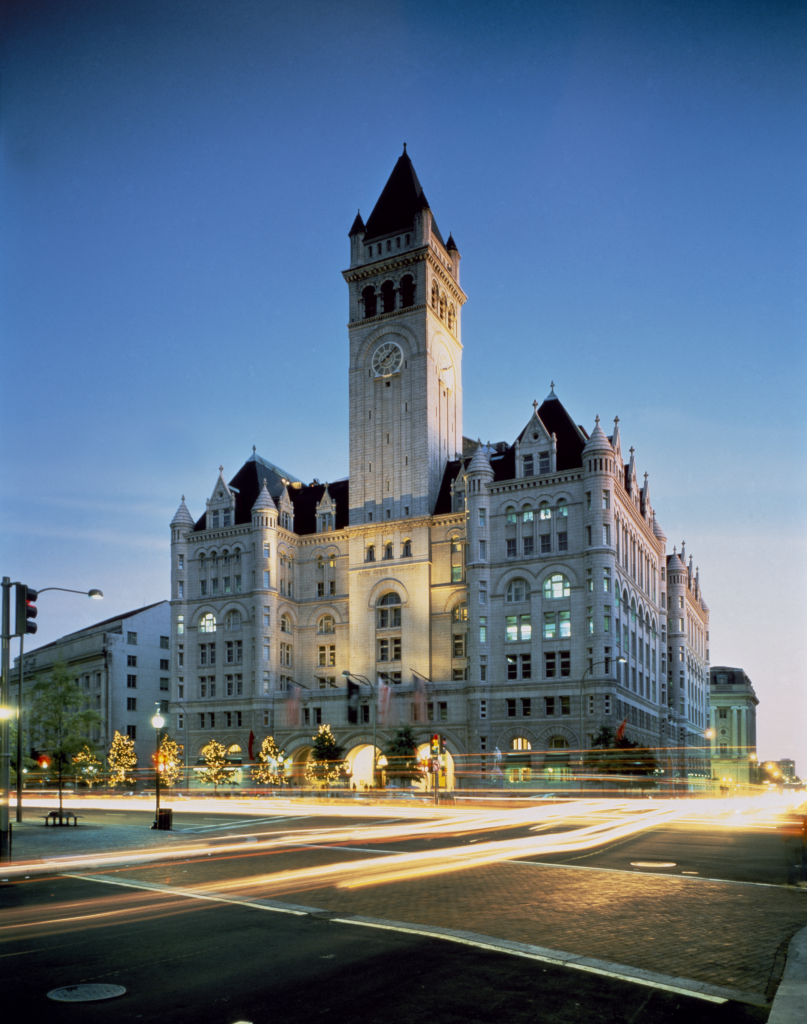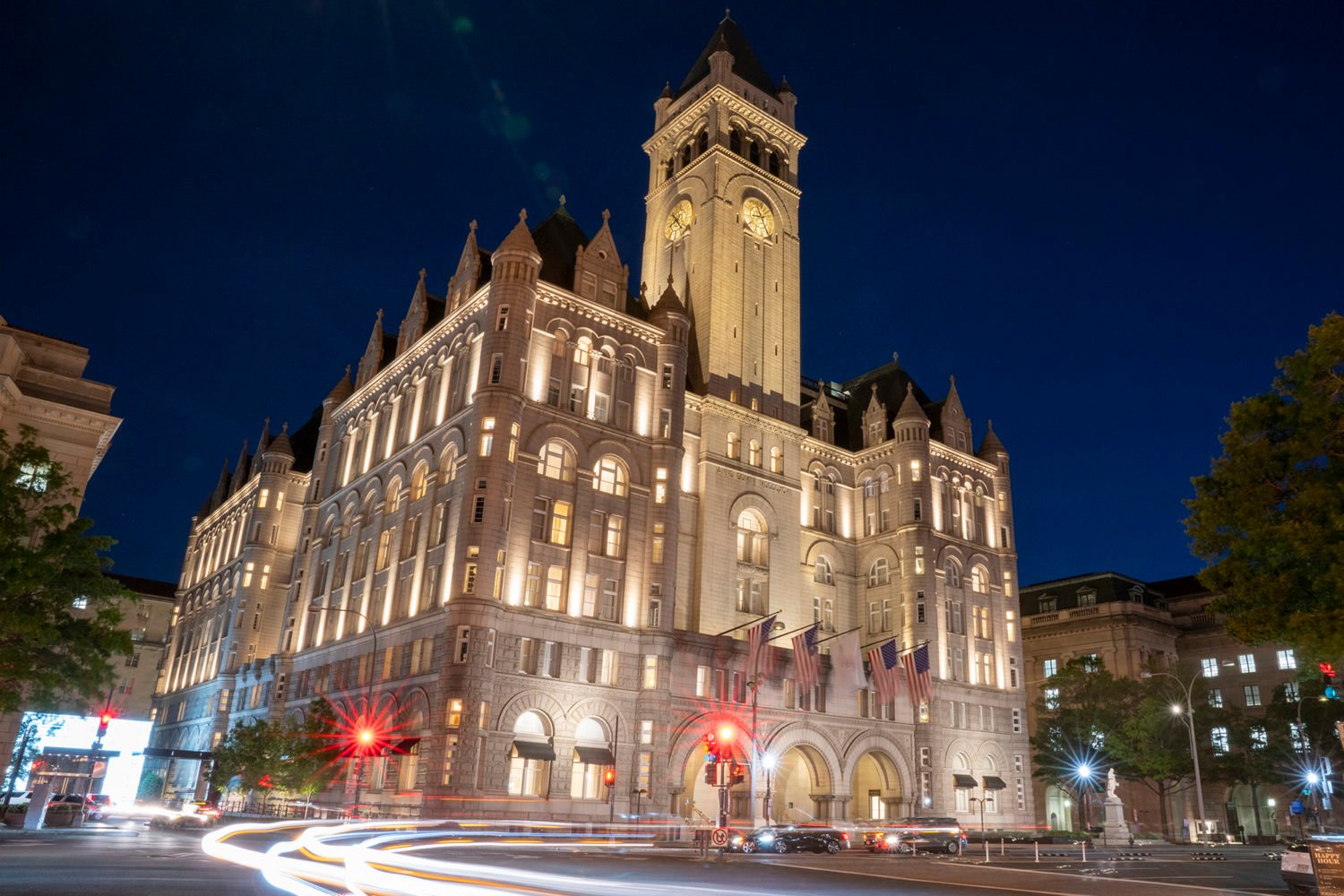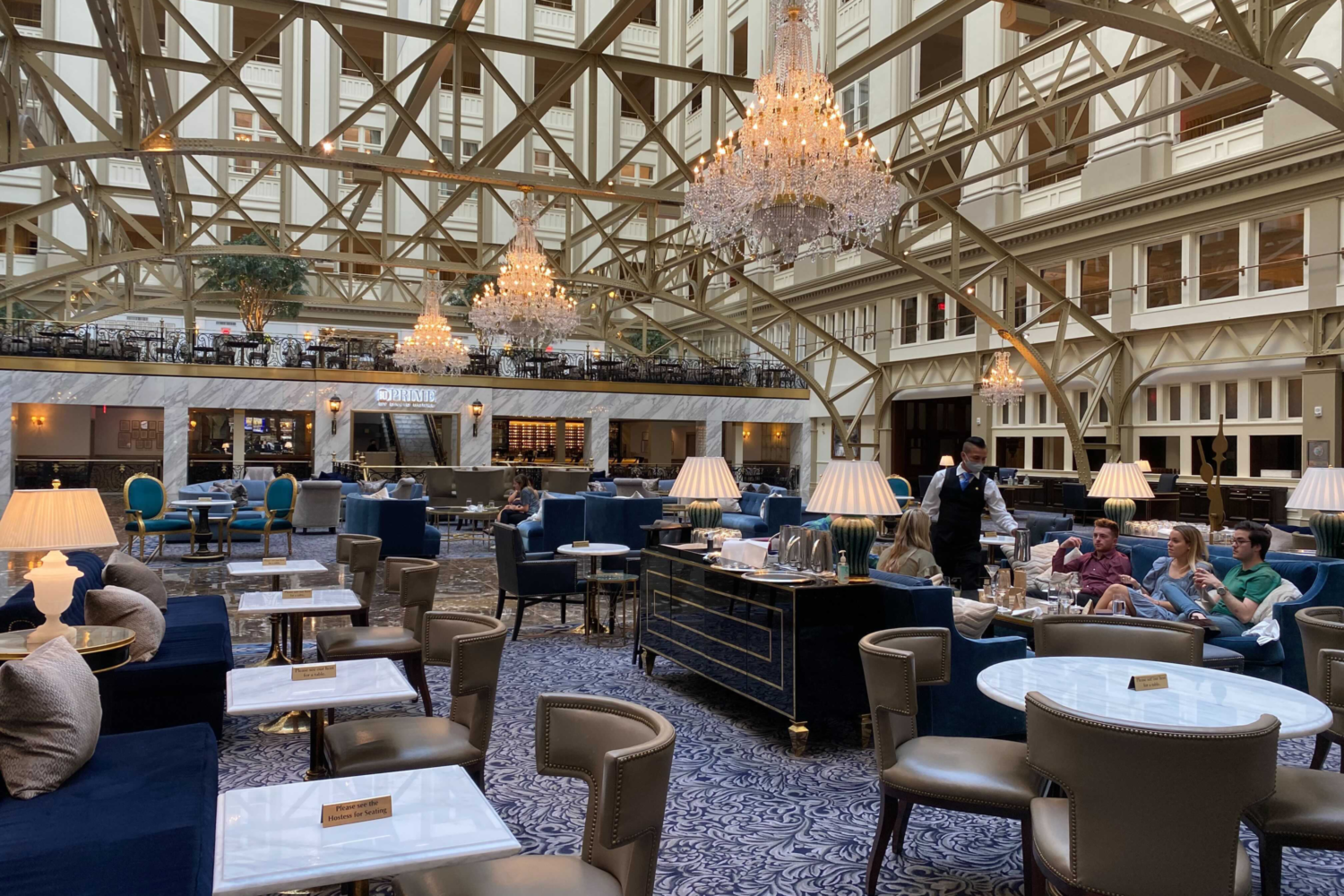Built more than a century ago, this landmark on Pennsylvania Avenue has survived multiple demolition threats while repeatedly getting reinvented. With its future again unclear—the current occupant is facing financial issues—here’s an overview of its turbulent journey.
1899

The Post Office Building opens for business. It’s the headquarters of the US Post Office Department, as well as home to the DC Post Office. The location is meant to revitalize the surrounding Murder Bay slum. Reaction is negative: People think it looks ugly and outdated.
1934
Dubbed the “Old Post Office” after mail operations moved out, it faces razing. But Congress opts against demolishing a newish building during the Depression and designates it for offices and storage.
1956

The building’s most eye-popping feature, the clock tower, makes a different kind of impression when a half-ton weight attached to the mechanical clock comes loose and crashes through two floors onto a man’s desk. The clock is later replaced with an electric one.
1970
Congress backs another demolition attempt. But Nancy Hanks, chair of the National Endowment for the Arts, testifies before Congress to preserve the building, inspiring locals to protest, including the group Don’t Tear It Down (now called the D.C. Preservation League).
1973
The Old Post Office is added to the National Register of Historic Places, ensuring that it won’t face further existential threats.
1983

President Ronald Reagan rededicates the Old Post Office as the Nancy Hanks Center, which houses several arts-and-humanities-related federal agencies and a glossy food-and-shopping court. The attention-getting renovation paves the way for other mixed-use projects in federal buildings, which weren’t legal until 1976.
1992
An atrium is added with more-upscale shops and an indoor mini-golf course. But DC shoppers shrug, and it never fills more than half of its tenant space. By the early 2000s, it’s shuttered.
2016

The Trump International Hotel opens after the General Services Administration awards a 60-year lease to the Trump Organization, which spends $200 million to turn it into a hotel. Six years later, with Donald Trump out of office, the company sells the lease for $375 million. The Waldorf Astoria opens there in 2022.
2024
The Waldorf appears to struggle, and its owners default on the mortgage, leading to a foreclosure auction being set for June 20. Just days before, the sale gets postponed—now set for August 5. What comes next? If the Waldorf can’t resolve its issues, the lease will likely be sold to new tenants.
A version of this article appears in the July 2024 issue of Washingtonian.



















